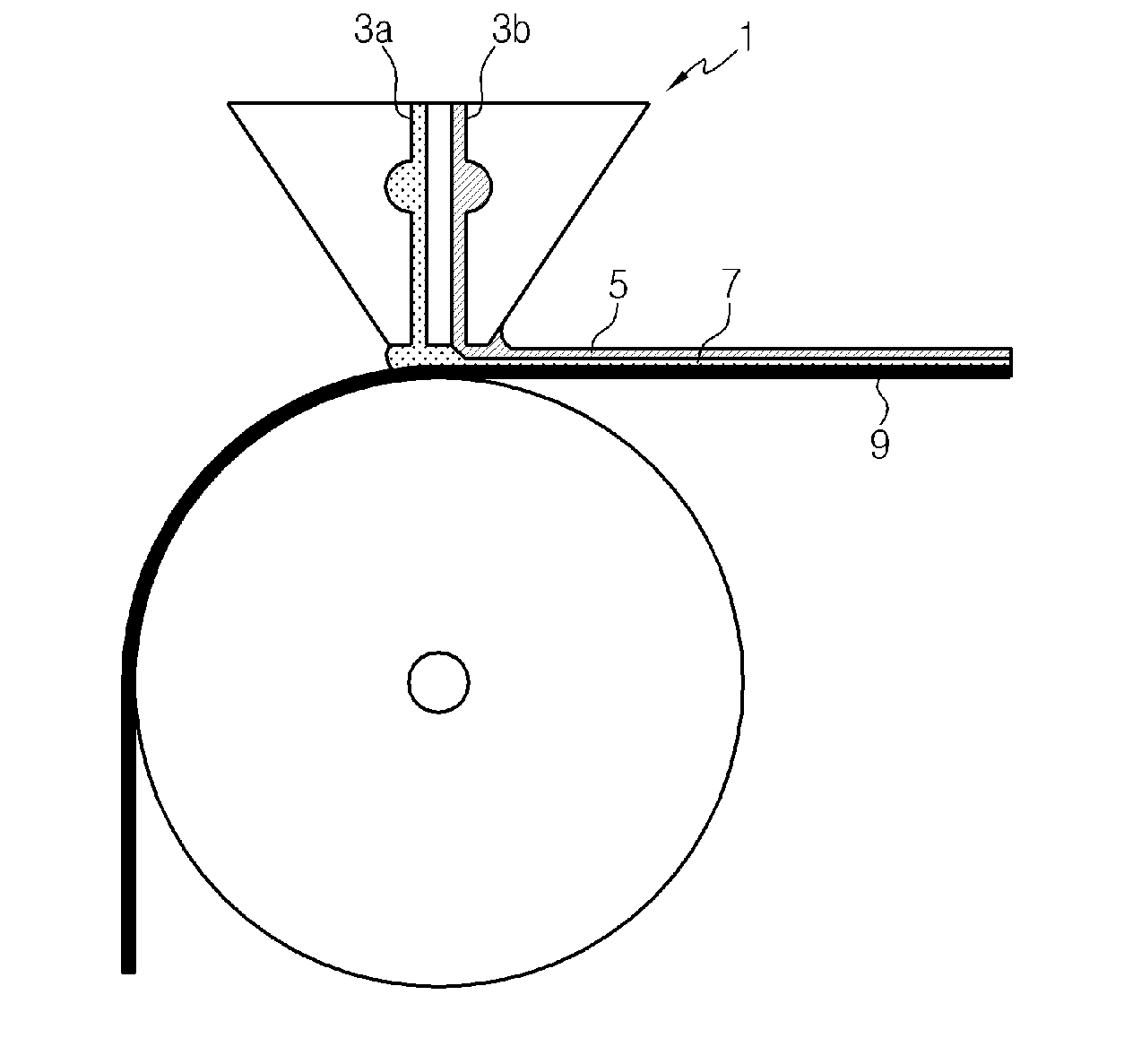Method For Manufacturing Separator, Separator Manufactured By The Method And Method For Manufacturing Electrochemical Device Including The Separator
- Summary
- Abstract
- Description
- Claims
- Application Information
AI Technical Summary
Benefits of technology
Problems solved by technology
Method used
Image
Examples
example 1
[0052]A polymer mixture of cyanoethylpullulan as a first binder polymer and polyvinylidene fluoride-co-hexafluoropropylene (PVdF—HFP) as a second binder polymer in a weight ratio of 2:10 was dissolved in acetone at 50° C. for at least about 12 hours to prepare a polymer solution. A barium titanate (BaTiO3) powder was added to the polymer solution until the weight ratio of the polymer mixture to the inorganic powder reached 10:90. The inorganic particles were crushed and dispersed using a ball mill for at least 12 hours to prepare a slurry. The inorganic particles of the slurry had an average particle diameter of 600 nm.
[0053]The slurry and distilled water as a non-solvent for the second binder polymer were sequentially coated on one surface of a 12 μm thick porous polyethylene terephthalate membrane (porosity 45%) through the slot die illustrated in FIG. 1. The wet thicknesses of the slurry and the non-solvent were adjusted to 75 μm and 10 μm, respectively.
[0054]Subsequently, the co...
example 2
[0057]A separator was manufactured in the same manner as in Example 1, except that the kind of the non-solvent was changed to a mixture of distilled water and methanol (5:5 (v / v)). The separator was found to have a Gurley value of 367.6 sec / 100 mL and a bonding strength of 9.81 gf / cm.
example 3
[0058]A separator was manufactured in the same manner as in Example 1, except that the kind of the first binder polymer was changed to polycyanoacrylate. The separator was found to have a Gurley value of 375.4 sec / 100 mL and a bonding strength of 13.94 gf / cm.
PUM
| Property | Measurement | Unit |
|---|---|---|
| Thickness | aaaaa | aaaaa |
| Particle diameter | aaaaa | aaaaa |
| Weight ratio | aaaaa | aaaaa |
Abstract
Description
Claims
Application Information
 Login to View More
Login to View More - R&D
- Intellectual Property
- Life Sciences
- Materials
- Tech Scout
- Unparalleled Data Quality
- Higher Quality Content
- 60% Fewer Hallucinations
Browse by: Latest US Patents, China's latest patents, Technical Efficacy Thesaurus, Application Domain, Technology Topic, Popular Technical Reports.
© 2025 PatSnap. All rights reserved.Legal|Privacy policy|Modern Slavery Act Transparency Statement|Sitemap|About US| Contact US: help@patsnap.com


